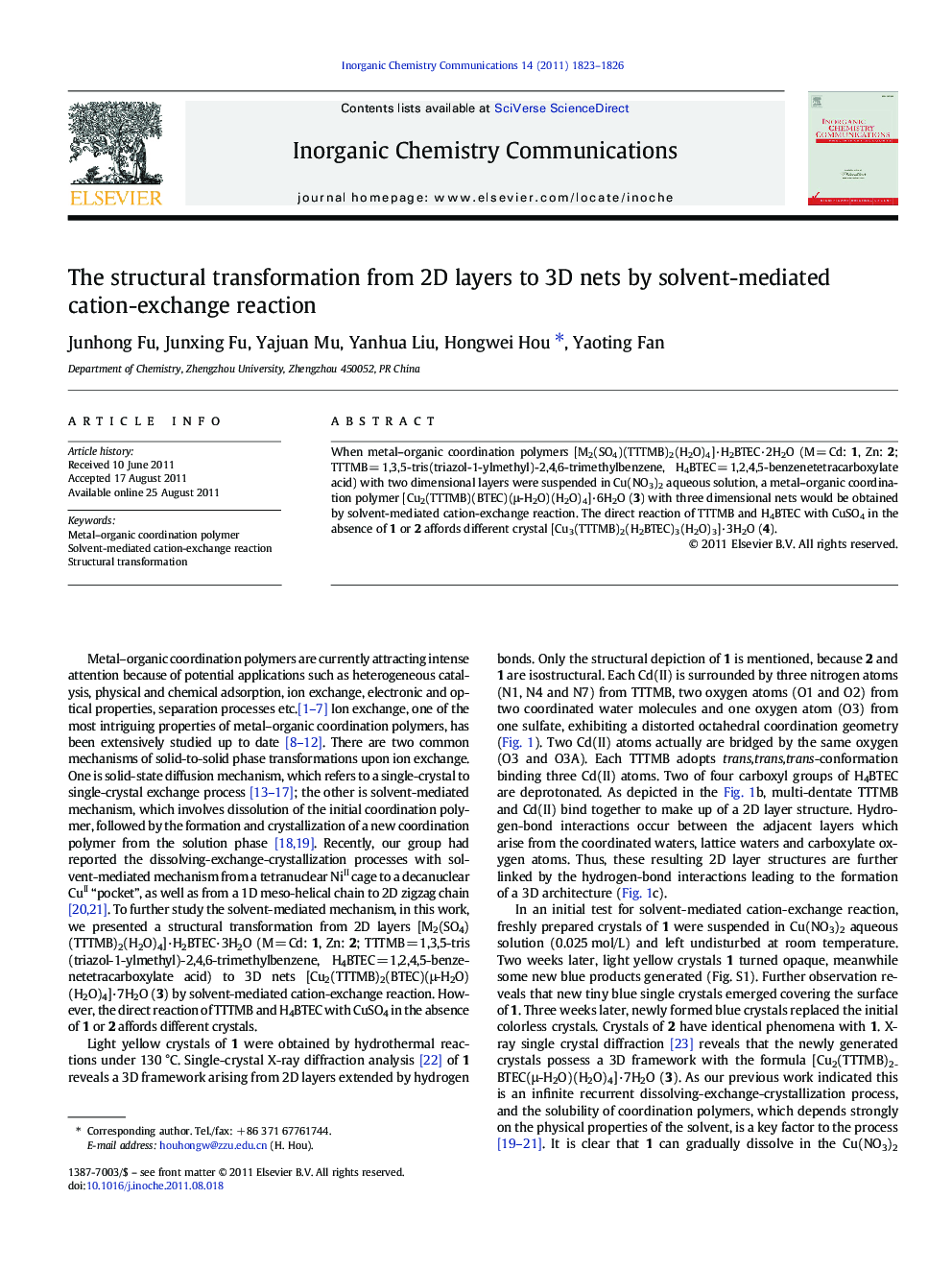| Article ID | Journal | Published Year | Pages | File Type |
|---|---|---|---|---|
| 1304178 | Inorganic Chemistry Communications | 2011 | 4 Pages |
When metal–organic coordination polymers [M2(SO4)(TTTMB)2(H2O)4]·H2BTEC·2H2O (M = Cd: 1, Zn: 2; TTTMB = 1,3,5-tris(triazol-1-ylmethyl)-2,4,6-trimethylbenzene, H4BTEC = 1,2,4,5-benzenetetracarboxylate acid) with two dimensional layers were suspended in Cu(NO3)2 aqueous solution, a metal–organic coordination polymer [Cu2(TTTMB)(BTEC)(μ-H2O)(H2O)4]·6H2O (3) with three dimensional nets would be obtained by solvent-mediated cation-exchange reaction. The direct reaction of TTTMB and H4BTEC with CuSO4 in the absence of 1 or 2 affords different crystal [Cu3(TTTMB)2(H2BTEC)3(H2O)3]·3H2O (4).
Graphical abstractThrough cation-exchange reaction, a Cd(II) or Zn(II) metal-organic coordination polymer with two dimensional layers can transform to a Cu(II) metal-organic coordination polymer with three dimensional nets. Visual evidence indicates that the reaction is a process of solvent-mediated reaction.Figure optionsDownload full-size imageDownload as PowerPoint slideHighlights► The structural transformation is from 2D Cd(II) or Zn(II) layers to 3D Cu(II) nets. ► The direct reaction of TTTMB and H4BTEC with CuSO4 affords a different crystal.
